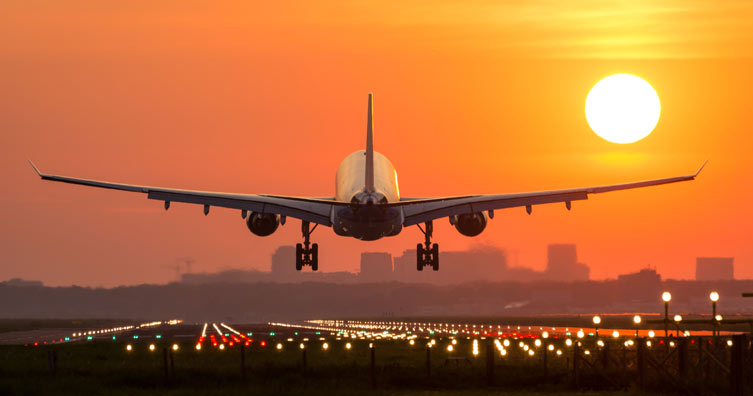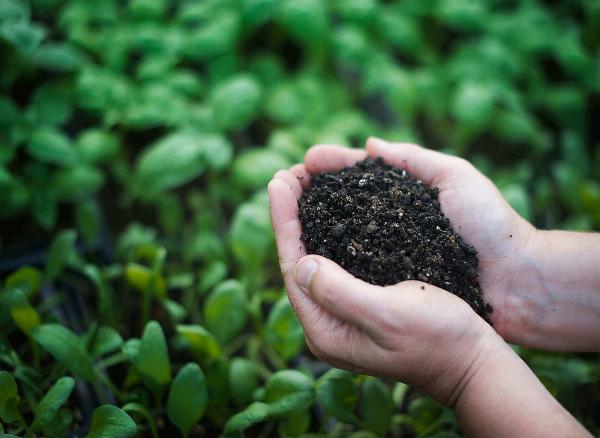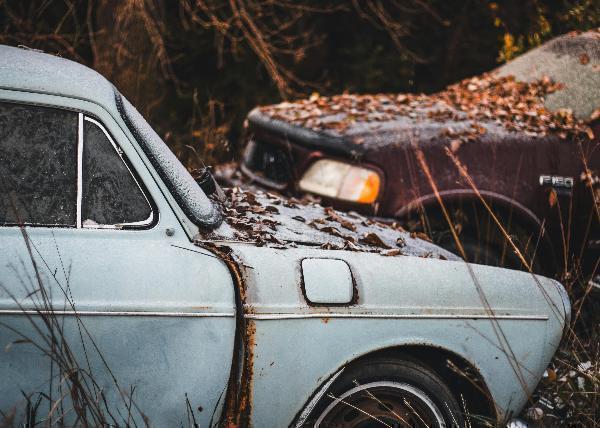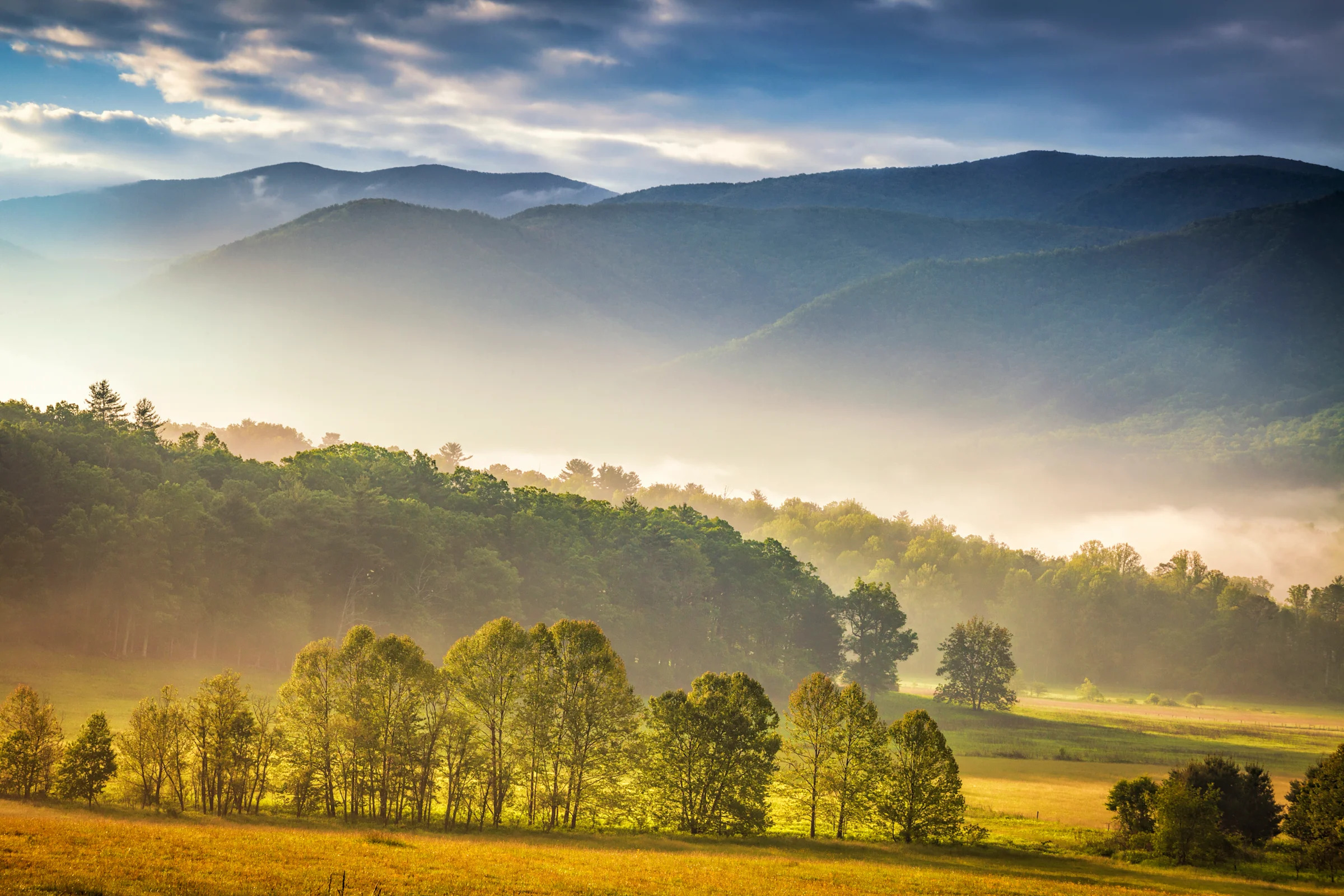
Intrepid Travel provided support for the author's travel and research, allowing her to fully experience and report on this destination in depth. She lived in East Tennessee and Western North Carolina from 2008 to 2016 and has ties to the region. All opinions and observations are her own.
When I signed up for a three-day guided hiking trip with Wildland Trekking, an Intrepid Travel Company, I expected Appalachian forests, black bears (at a distance) and maybe a scenic overlook or two. I got all of those, plus something I didn’t expect: a living lesson in recovery.
I’m grateful. The Smoky Mountains are still healing after Hurricane Helene swept through the region in late 2024, leaving parts of the park closed and many local businesses working to regain losses from the dip in tourism. Trail access is still limited in areas, and when I went in May 2025, even some of the most popular areas, like Big Creek and the Pigeon River crossings, required improvisation.
But that’s exactly what made the trip worth taking.
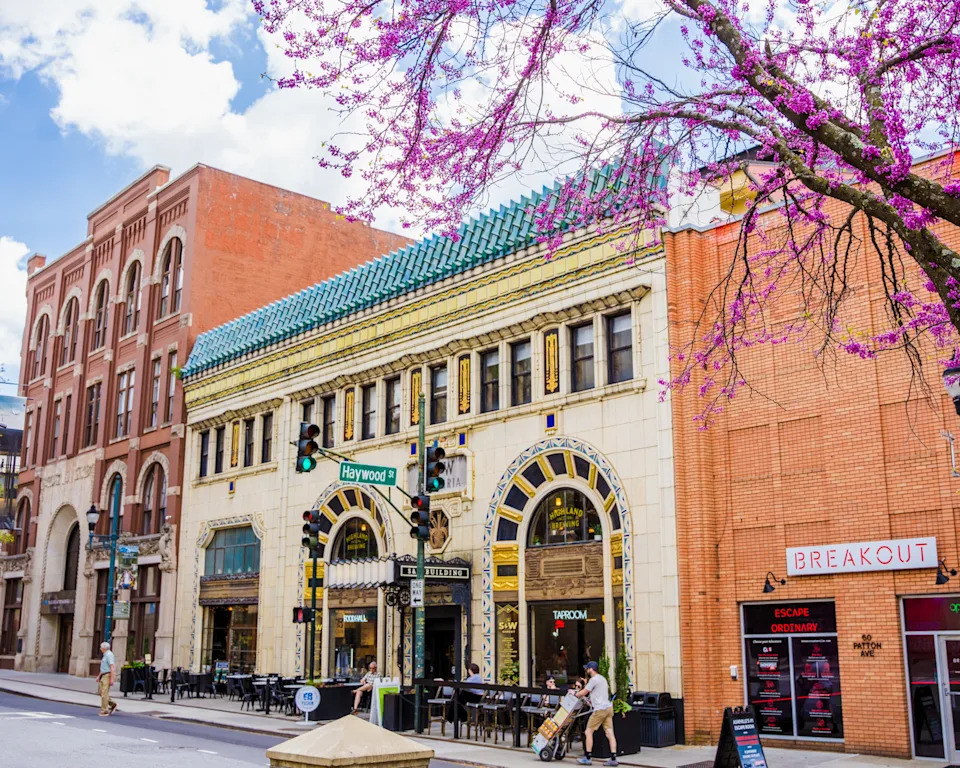 Downtown Asheville bursts with spring blooms in April 2025. (Fiasco Media / Explore Asheville)
Downtown Asheville bursts with spring blooms in April 2025. (Fiasco Media / Explore Asheville)Our group began in Asheville, N.C., with a 1.5-hour shuttle to the Oconaluftee entrance of Great Smoky Mountains National Park. Over the next three days, we hiked more than 20 miles, relaxed by cool babbling rivers, and passed through both dense forests and bald, wind-swept outcroppings. Along the way, we listened to stories from other hikers and locals, who spoke of disruption, adaptation and quiet strength.
AdvertisementAdvertisement#_R_hrckr8lb2mav5ubsddbH1_ iframe“It shows a lot of bravery for tourists to come out here right now,” said our guide, Kyle Nush. “It means they’re willing to experience [the Smokies] even though they’re not the same as what was described years ago. We’re going through a whole shift. Things are going to change, and they get to be a part of that.”
After three days on foot, I started to believe that, too.
Here are six lessons the trail taught me about resilience.
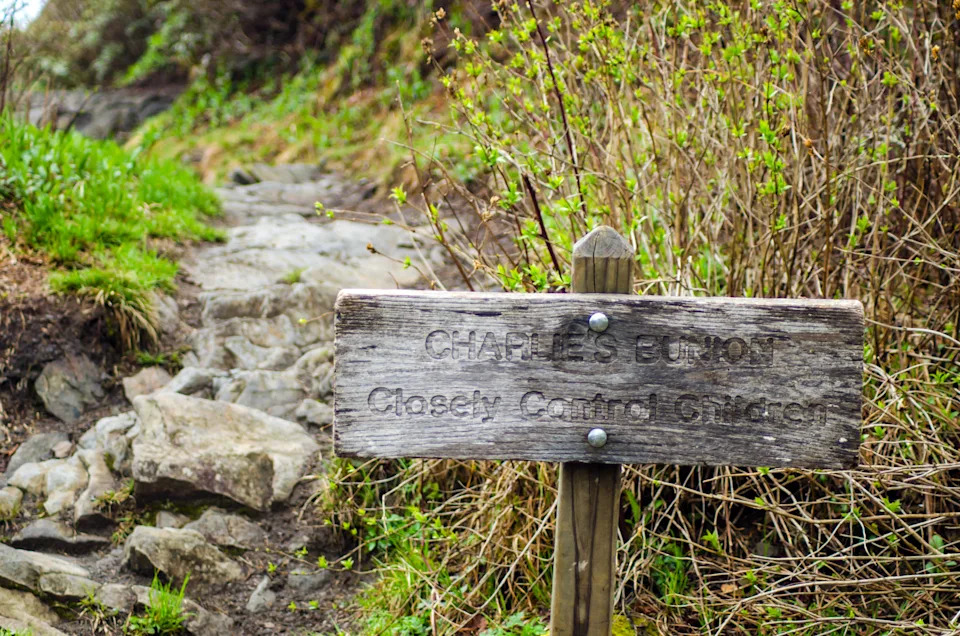
1. Every bump in the trail has a story—even your bunion
On our first day, we hiked from Newfound Gap to Charlie's Bunion, a jagged rock outcrop that sits on the Tennessee-North Carolina border, with a name rooted in Appalachian storytelling—and a little moonshine.
AdvertisementAdvertisement#_R_jjckr8lb2mav5ubsddbH1_ iframeAs our guide Kyle told it, two old friends, Charlie Conner and Horace Kephart, were hiking this ridge after a wildfire had left it bare, with no trees or vegetation. Kephart, known to enjoy moonshine, was in rare form that day—rambling, reminiscing, and, as Kyle put it, “raving on and on about how Charlie was the best buddy he ever had.”
At one point, Charlie took off his boots to rest. Kephart pointed to a nearby rock and declared, “Charlie, that thing looks just like your bunion.” And just like that, the name stuck.
When hearing this story, I couldn’t decide if the name was a roast or a tribute. But beneath the punchline is a familiar truth: in these mountains, a little self-deprecation goes a long way. And if you’re lucky, your quirks might just earn a place on the map.
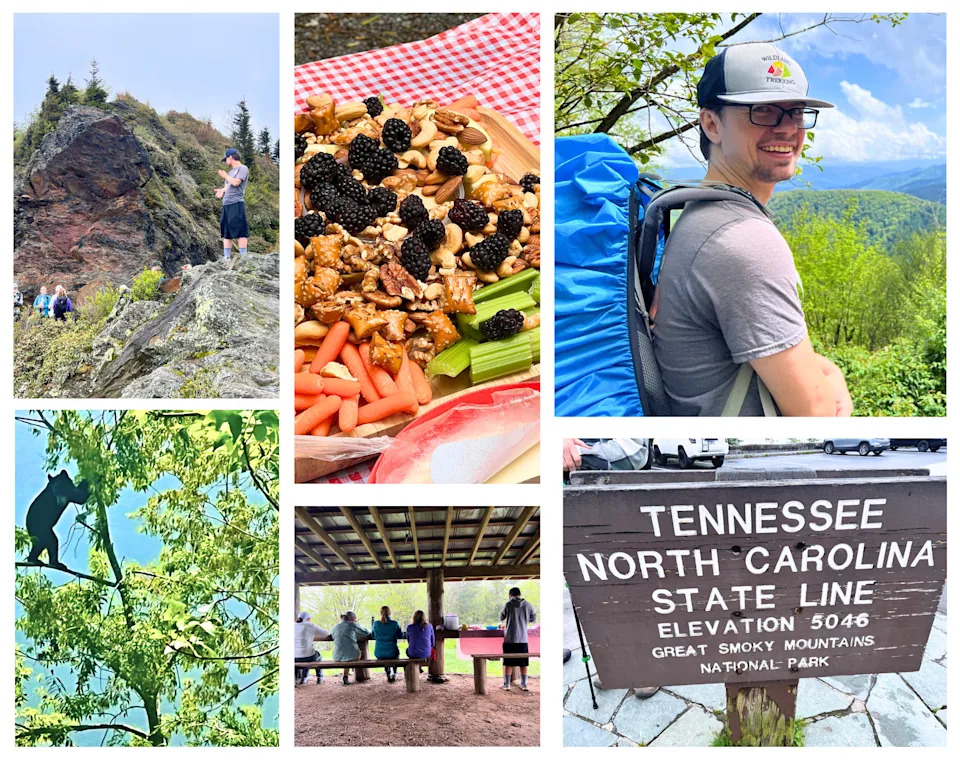 This guided trek through the Smokies followed the rocky path to Charlies Bunion along the Tennessee–North Carolina border, where guide Kyle Nush led the group across wind-cut ridgelines and down to shaded lunch shelters. In Cades Cove, black bears climbed high into the trees. Trail snacks—blackberries, nuts, and bright vegetables—waited at the end of long, muddy miles. (Megan DeMatteo)
This guided trek through the Smokies followed the rocky path to Charlies Bunion along the Tennessee–North Carolina border, where guide Kyle Nush led the group across wind-cut ridgelines and down to shaded lunch shelters. In Cades Cove, black bears climbed high into the trees. Trail snacks—blackberries, nuts, and bright vegetables—waited at the end of long, muddy miles. (Megan DeMatteo)2. Resilience means working together and passing it on
Trail intel is often shared person-to-person: over snacks, at overlooks, or while lacing up boots. That’s how we found out from a fellow hiker about a makeshift “ferry” near Uncle Johnny’s Hostel in Erwin, Tennessee, a lodging hotspot popular among hikers. After flooding from Hurricane Helene made the crossing unsafe, locals and hikers teamed up to float people across in tubes.
AdvertisementAdvertisement#_R_lbckr8lb2mav5ubsddbH1_ iframeThat kind of cooperation is baked into the culture of the Smokies. People help each other out on the trail, in town, and around the dinner table.
Case in point: after each of our three days hiking, we rested our bones at the Dancing Bear Cabins in Townsend, where the rooms were cozy and quiet. On our last night, the Appalachian Bistro served one of the best meals I’ve had in years: a juicy pork chop brined in peach tea, glazed with a layer of sweet BBQ sauce and served with charred green beans and carrots. After the meal, we sat around the ambient campfire where kids roasted marshmallows from the nearby s’more station.
In the Smokies—and, I’d argue, anywhere else—resilience is really about sharing what you know, pitching in when you can, and feeding people well. Even when the rivers rise.
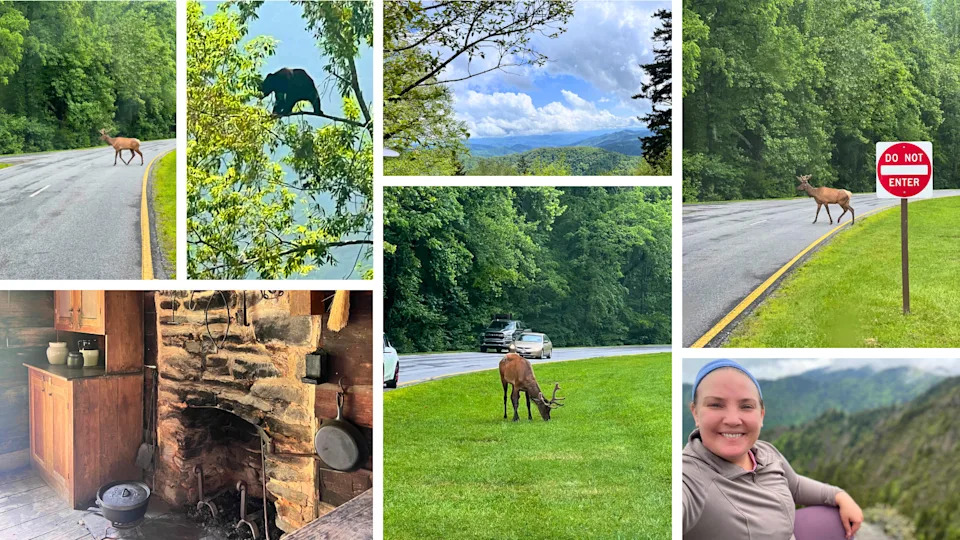 Elk near Oconaluftee and black bears in Cades Cove reminded hikers to stay alert in wildlife zones. The trip included a visit to a preserved mountain cabin and sweeping views of the Smokies. (Megan DeMatteo)
Elk near Oconaluftee and black bears in Cades Cove reminded hikers to stay alert in wildlife zones. The trip included a visit to a preserved mountain cabin and sweeping views of the Smokies. (Megan DeMatteo)3. Resilience doesn’t mean forcing the original plan
The trip we signed up for wasn’t the one we took. And honestly, I’m glad it wasn’t.
AdvertisementAdvertisement#_R_n3ckr8lb2mav5ubsddbH1_ iframeBefore Helene, Day 3 of the Smoky Mountain Hiking Experience typically included an eight-mile hike along Big Creek to a swimming hole and eventually Mouse Creek Falls, one of the park’s many ethereal cascades. But flooding had made the trail hard to reach for Wildland Trekking’s shuttle vans. The team at Wildland knew this in advance, so they changed plans.
But then, because of the weather—plans changed again. The morning we were supposed to hike to Andrews Bald and Clingmans Dome—the alternative trek the team usually runs as part of a different trip, but added to our three-day itinerary after Helene—buckets of rain fell from the sky. So, our group detoured to the Great Smoky Mountain Heritage Center in Townsend, Tennessee. We walked through curated exhibits that educated us about Cherokee culture and early settler life, then browsed the books for sale in the gift shop and learned about the 1999 archaeological dig that uncovered artifacts dating back 10,000 years, putting Tuckaleechee Cove (where Townsend meets the Little River) on the map.
What could have felt like a compromise turned out to be a gift when we adjusted and showed up in earnest.
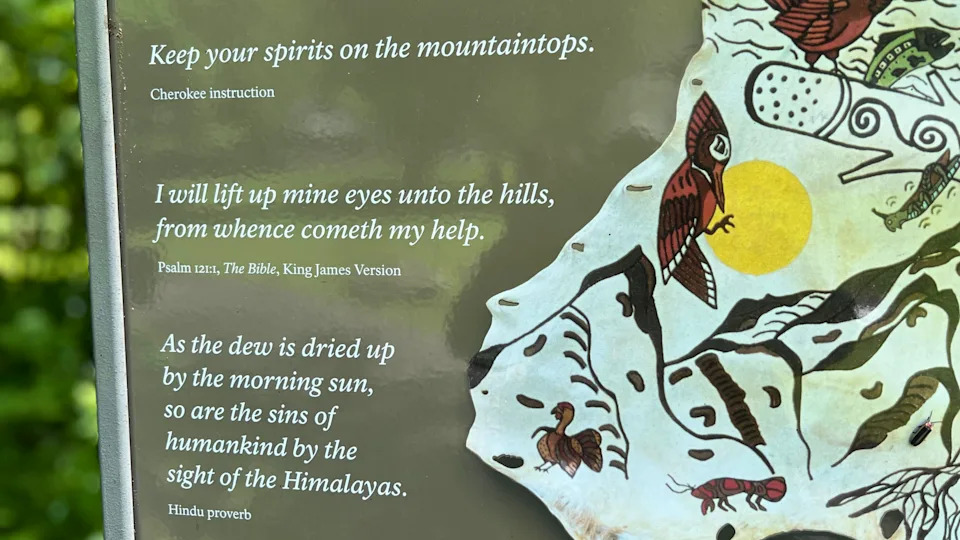 A trail sign shares cross-cultural wisdom from Cherokee teachings, the Bible, and Hindu proverbs, celebrating the spiritual connection between people and mountains. (Megan DeMatteo)
A trail sign shares cross-cultural wisdom from Cherokee teachings, the Bible, and Hindu proverbs, celebrating the spiritual connection between people and mountains. (Megan DeMatteo)4. Resilience starts with remembering where you come from
On our final, rainy day in the Smokies, we also visited the Mountain Farm Museum near the Oconaluftee Visitor Center. The preserved homestead tells the story of 19th-century Appalachian farmers who built full lives with limited resources. Inside, the worn floors, hearth, and handmade tools provided us a glimpse of early mountain life.
AdvertisementAdvertisement#_R_orckr8lb2mav5ubsddbH1_ iframeOutside, we walked the Oconaluftee River Trail, where trail markers appear in both English and Cherokee syllabary. These signs tell the stories of the Smokies’ original stewards with a Cherokee instruction: “Keep your spirits on the mountaintops.”
Another, a Hindu proverb, compares the cleansing power of mountain views to the morning sun burning off dew. After days of sweating up ridgelines, this gentle reminder made the park’s legacy feel even more alive.
The Smokies hold centuries of stories, and those stories continue today with every new visitor. You feel it in the land, the language, and the effort it takes to preserve and steward this place.
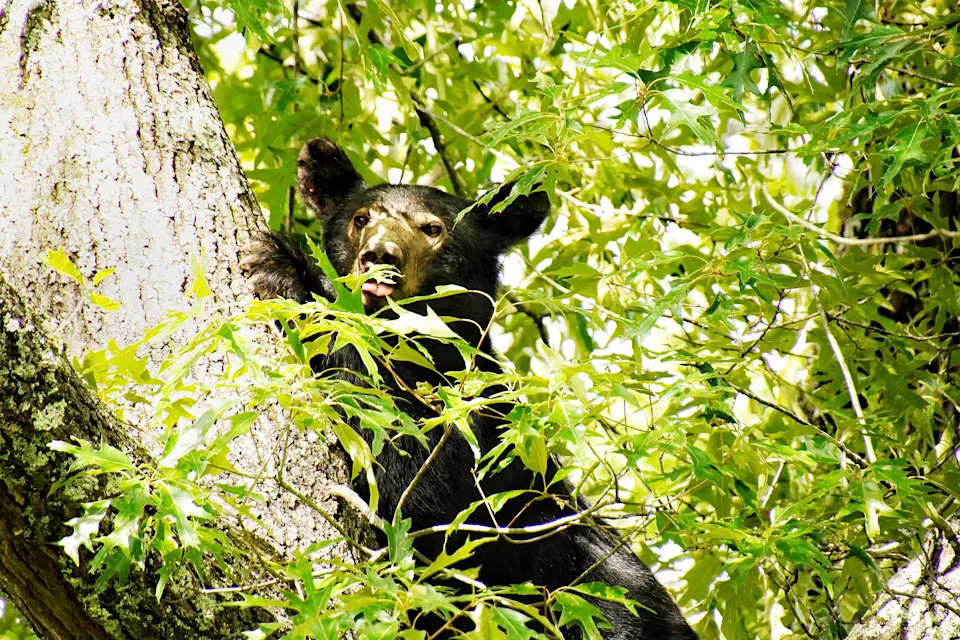 A black bear climbs a tree along the Cades Cove Scenic Loop in Great Smoky Mountains National Park. The area spans parts of Tennessee and North Carolina and is known for wildlife viewing in the Appalachian and Blue Ridge Mountains.
A black bear climbs a tree along the Cades Cove Scenic Loop in Great Smoky Mountains National Park. The area spans parts of Tennessee and North Carolina and is known for wildlife viewing in the Appalachian and Blue Ridge Mountains.5. Survival warrants respect—not pity
In Asheville, where we started and ended our trip, reminders of Tropical Storm Helene are everywhere, especially along the Swannanoa River and through the River Arts District. Tree lines are thinner. Entire buildings are gone. But what remains is not devastation or a feeling of victimhood. Rather, the people of Asheville and its surrounding regions have sent a strong message: they are more galvanized than ever.
AdvertisementAdvertisement#_R_qjckr8lb2mav5ubsddbH1_ iframeWhen I asked Kyle what he wished visitors understood, he didn’t hesitate. “Just be mindful of what locals have been through,” he said. “You don’t have to say, ‘I’m so sorry,’ or overplay it,” he added, recognizing that it’s hard to know what locals have survived if you've never been through it yourself.
“I know for me, that was a personal first experience going through something like this,” he said about Helene. “I never knew what it was like.”
Still, he says, empathy doesn’t mean performative sympathy. It means showing up, listening, and not looking away.
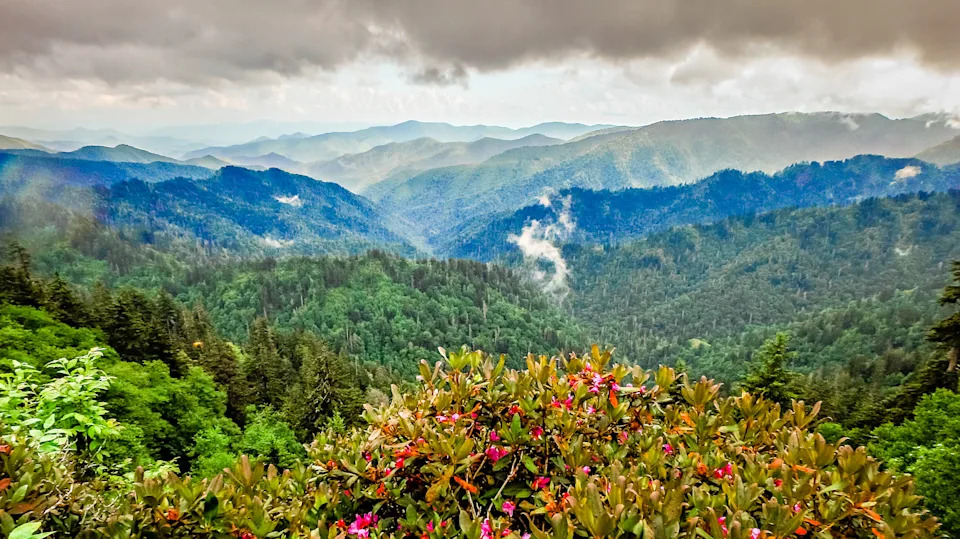 View from Charlies Bunion along the Appalachian Trail
View from Charlies Bunion along the Appalachian Trail6. The parks need us now more than ever
Earlier this year, Intrepid Travel launched a new U.S. National Parks and Public Lands bureau through its editorial platform, Adventure.com. The goal is to tell stronger stories about America’s wild spaces at a time when environmental protections are being cut.
AdvertisementAdvertisement#_R_sbckr8lb2mav5ubsddbH1_ iframe“Strong, independent storytelling is one of the most powerful tools we have to defend these lands,” said Leigh Barnes, Intrepid’s president of the Americas in a recent Travel Weekly article.
Despite being the most-visited national park in the country, the Great Smoky Mountains face persistent challenges, from budget constraints to increasingly extreme weather.
Even after the storms, however, the views are stunning and the trails remain a draw. Visibility and public interest help keep parks funded and protected. So, start chatting! The more we walk these trails and share those stories with our friends, the more reasons we give to protect them.
 Yahoo CreatorMegan DeMatteoCreator of Unimaginably Good TravelMegan DeMatteo is an internationally published writer and solopreneur inspiring meaningful travel. Her writing appears in Fodor’s, Dwell, Insider, Marie Claire, CNBC, and more.Follow
Yahoo CreatorMegan DeMatteoCreator of Unimaginably Good TravelMegan DeMatteo is an internationally published writer and solopreneur inspiring meaningful travel. Her writing appears in Fodor’s, Dwell, Insider, Marie Claire, CNBC, and more.Follow Unimaginably Good Travel
Unimaginably Good Travel


